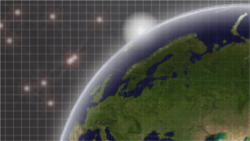The Best of Science World
On this program we feature four of our One on One interview segments from past Science World programs. Health experts having been warning us for years about the health risks of living a sedentary lifestyle and now researchers in Australia and here in the United States have examined the associations of sitting time and chronic diseases and found that the more you sit the greater your risk of developing potentially deadly conditions and diseases such as cancer, diabetes, heart disease and high blood pressure. Richard Rosenkranz a researcher and assistant professor of human nutrition at Kansas State University a member of the investigative team told us what he and his colleagues learned from their research and what we need to do to keep ourselves healthy. A team of researchers successfully drilled through about 800 meters of Antarctic ice and retrieved clean whole samples of the waters and sediments from the fresh water subglacial Lake Whillans. The researchers then ran some tests and found what they were looking for, microbial life. John Priscu one of the leaders of the Whillans Ice Stream Subglacial Access Research Drilling project said that underneath Antarctica's ice sheet lies a large wetland ecosystem with an active microbiology. Dr. Priscu told us about the project and its findings. Astronomers say that the giant Atacama Large Millimeter/submillimeter Array (ALMA) located in the Chilean Andes will allow them a greater ability to peer even farther into the depths of the universe than ever thought possible. Dr. Alison Peck, ALMA Deputy Project Scientist told us about the radio telescope, what it offers scientists that previous technology didn't and what they hope they'll find with the vast radio telescope array. Have you ever heard of a phenomenon called Dark Lightning? No, I'm not making it up and it's not science fiction. Professor Joseph Dwyer and his colleagues from the Florida Institute of Technology have been researching dark lightning and have developed what they describe as a promising physics-based model of exactly how thunderstorms manage to produce high-energy radiation. Professor Dwyer told us about Dark Lightning and what he and his team have learned about this strange phenomenon.
Episodes
-
![]() February 12, 2024
February 12, 2024Science in a Minute: Mystery of Snowball Earth May Have Been Cracked
-
![]() February 06, 2024
February 06, 2024Science in a Minute: CERN New and Bigger Atom Smasher on the Way
-
![]() February 05, 2024
February 05, 2024Science in a Minute: NASA's PACE Mission
-
![]() January 31, 2024
January 31, 2024Science in a Minute: The Shrinking Wrinkled Moon












